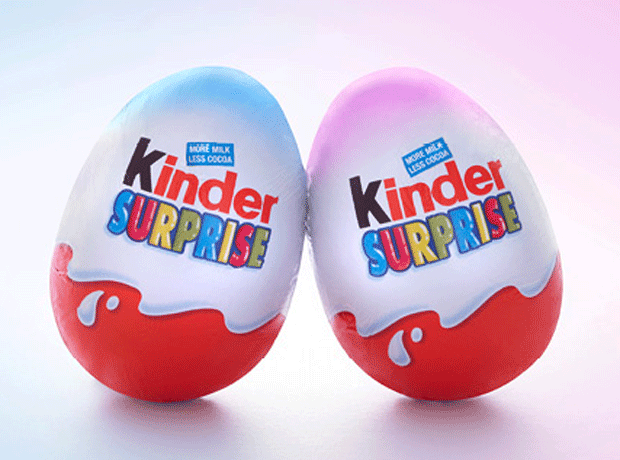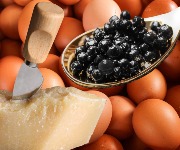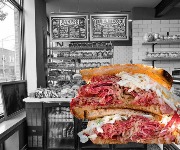The ‘pinkification’ of kids' food – enough is enough!

Pink for girls and blue for boys – a potentially damaging stereotype hitting our supermarket shelves with more force than ever before, suggests lovefood’s Charlotte.
The 'pink plague'
‘Pinkification’: literally, colouring a product pink in an attempt to attract the female market; and metaphorically, the corporation-led imposition of heavily stereotyped values on unwitting girls. It’s mirrored by the ‘blueification’ of products for boys, and is a phenomenon which some say was introduced by American manufacturers in the 1940s.
The pinkification (or ‘genderisation’, if considering both sexes) of products begins at a very early age – try finding a non-pink celebration card for a new-born baby girl. For kids, it can affect the board games they play, the magnets they stick on the fridge, and even the Halloween costumes they might wear. And as a parent I imagine it’s near-impossible to avoid this so-called ‘pink plague’, especially when your little girl becomes ‘hooked’ on the colour before the age of three.
Kids v The World
 Personally, pinkification worries me. Most children cannot help but be slaves to social conditioning. They innocently absorb the messages fed to them by omnipotent advertisers and manufacturers, and don’t yet have the foresight to question or reject those ideas (although some bright sparks do). The problem lies less with the colours themselves and more with the connotations – a quick Google image search shows that pink toys are usually dolls, prams and tiaras, while blue toys are cars, planes and tools. So can we really expect a four-year-old girl, who by then has learned to ‘like’ pink, to pick out a toy which isn’t somehow related to fairies and dolls?
Personally, pinkification worries me. Most children cannot help but be slaves to social conditioning. They innocently absorb the messages fed to them by omnipotent advertisers and manufacturers, and don’t yet have the foresight to question or reject those ideas (although some bright sparks do). The problem lies less with the colours themselves and more with the connotations – a quick Google image search shows that pink toys are usually dolls, prams and tiaras, while blue toys are cars, planes and tools. So can we really expect a four-year-old girl, who by then has learned to ‘like’ pink, to pick out a toy which isn’t somehow related to fairies and dolls?
But this, of course, is a food website, and we’re not here to debate the morality of pink prams. I’ve learnt to try and ignore genderisation until I have children of my own, by which point I will probably rally against it very loudly, like campaigners Emma and Abi are doing at pinkstinks.co.uk. However, when pinkification affects the food I eat, then I have a right to write about it.
A nasty (Kinder) surprise
 After work one day last week, I decided to treat myself to one of my favourite (albeit childish) snacks – a Kinder Surprise chocolate egg. But horror struck when I saw that my beloved eggs now come with either a pink top, or a blue top. And guess what? The pink eggs contain dolls, and the blue eggs contain toy cars.
After work one day last week, I decided to treat myself to one of my favourite (albeit childish) snacks – a Kinder Surprise chocolate egg. But horror struck when I saw that my beloved eggs now come with either a pink top, or a blue top. And guess what? The pink eggs contain dolls, and the blue eggs contain toy cars.
You can imagine my anger – I was looking forward to unwrapping some kind of plastic safari animal, but was instead faced with making a humiliating decision based on my bodily parts. Not wanting to give money to such a lazy, stale campaign, I walked out of the shop sad and empty-handed.
It’s not just me. Trisha Lowther, founder of inspiring website Let Toys Be Toys which asks retailers to stop promoting boy-only and girl-only toys, told The Independent that she was “baffled” by the move made by manufacturers Ferrero UK, adding: “They’re going to alienate a large part of their potential customer base with this. We were really disappointed to hear they were launching in the UK.”
Have your say
There’s also an online petition to pull the (hopefully) limited edition eggs from stores, and instead return to the gender neutral toys that we all know and love. ‘The company should not be making products that perpetuate outdated stereotypes of girls,’ says Canadian Daria Mancino, who set up the petition. ‘A little girl should be accepted if she likes playing with cars or other toys that are typically for boys, and a boy should be able to dress up as a doll without being ridiculed.'. And to top it all off, there’s this spoof advert to enjoy, too.
In turn, a Ferrero spokesperson insisted that the company “does not advocate or promote our products as gender specific… Research prior to launch indicated that parents welcome this product, with 66 per cent saying it was a good idea.”
The Müller mistake
The same thing happened earlier this summer, when I noticed a packet of new Müller Corner ‘kids’ yoghurts in a friend’s fridge. The pink-coloured ‘Lots of Love’ (groan) yoghurt is strawberry flavoured, with pink and white chocolate coated cereal hearts; and the ‘Footballs’ yoghurt is vanilla flavoured, with black and white chocolate coated cereal balls. Even today, when England’s chances of winning a World Cup lie more with the women’s team than the men’s (let’s be honest here), girls still aren’t allowed to enjoy football.
We’ve written about this issue before on lovefood, and I think it’s getting worse. But enough about me. What about you? Do you think pinkification is a problem? Or do you barely even notice it? Talk to us in the Comments box below.
You might also like
Should food be gender targeted?
Most Recent
Comments
Be the first to comment
Do you want to comment on this article? You need to be signed in for this feature








